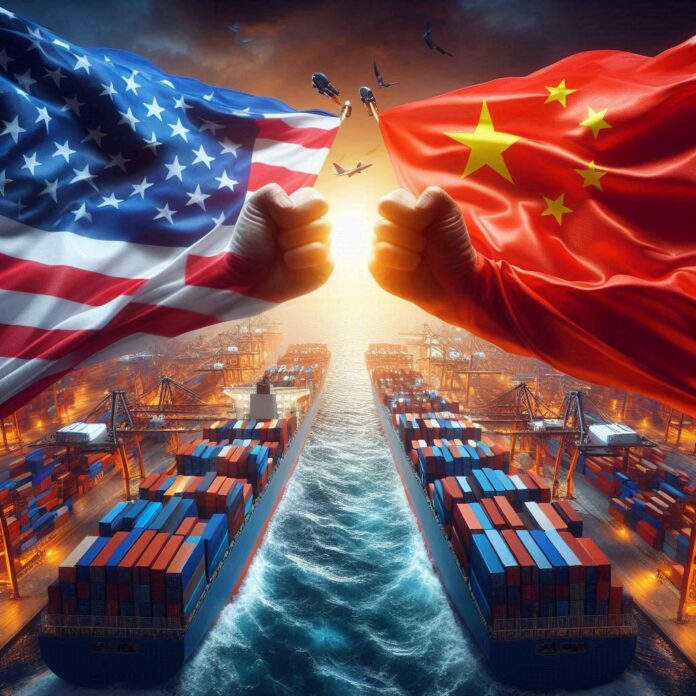A union proposal seeking to blunt China’s growing dominance in the maritime, logistics and shipbuilding sectors is finding bipartisan support among U.S. Congressional lawmakers, based on remarks made at a recent U.S. House of Representatives committee hearing.
The Congressional hearing, as well as the unions’ petition before the U.S. Trade Representative (USTR), reflect a growing concern among lawmakers and the private sector that China’s exponential growth in shipbuilding and in producing ship-to-shore cranes and shipping containers ultimately threatens U.S. national security.
Unions had petitioned USTR in March, arguing that the Chinese government “has funneled hundreds of billions of dollars” toward bolstering its shipbuilding industry so that now China dominates the world’s production of commercial vessels while the U.S.’s share is only 1%. The unions are pressing the USTR to take action against China’s practices under Section 301 of the U.S. Trade Act of 1974 by enforcing measures such as assessing a port fee on Chinese-built ships that dock at a U.S. port and creating a shipbuilding revitalization fund.
Congressional lawmakers affirmed the unions’ request at the June 26 hearing held by the House Select Committee on the Chinese Communist Party and entitled “From High Tech to Heavy Steel: Combatting the PRC’s Strategy to Dominate Semiconductors, Shipbuilding and Drones.”
“This committee should support unequivocally [the unions’] petition and demand that the USTR have remedies. I mean, it is unconscionable what we’ve allowed as a country,” said Rep. Ro Khanna, D-Calif.
“China started with 5% of the global market in shipbuilding in 1999. They’re up to 50%. They’re producing 1,000 ships every year. The United States, which used to lead, is producing 10 ships every year. This committee is for American leadership. We should be for ensuring that we’re not losing 100 to one on shipbuilding to China,” Khanna said. “The request for a docking fee of about US$1 million would translate into about less than US$50 per container.“
In response to Khanna’s statements, Rep. Andy Barr, R-Ky., said at the hearing, “I’m open to what [Khanna is] saying about a fee because I think China is an exception case… I do not think we should try to counter China by imitating Chinese industrial policy. … I think it would be a mistake to try to copy Chinese industrial policies because that’s actually the best way to misallocate resources. Free markets are the best answer in our competition with China, generally.”
Scott Paul, president of the Alliance for American Manufacturing, testified at the hearing that existing policy measures are not enough to address China’s “predatory market distortions,” adding that his trade association supports the counteracting measures that the unions proposed under Section 301 of the Trade Act.
Paul said that China controls over half the world’s shipbuilding today, beginning construction on nearly 1,800 large ocean-going vessels in 2022. The United States, in contrast, was constructing five vessels that year, he said. The decline in U.S. shipbuilding since the 1970s and the rising dominance in China’s shipbuilding efforts have also led to a situation where the U.S. Navy relies on Chinese-made dry docks in certain circumstances.
“We currently have a tonnage advantage, but it’s not sustainable. We don’t have a surge capacity,” pointed out Paul.
As congressional leaders debated what actions Congress should take to bolster U.S. shipbuilding capacity, USTR has been undergoing its four-year review of Section 301 of the Trade Act.
In addition to receiving the March petition from the unions, USTR said in May that it plans to raise the tariff rate on ship-to-shore cranes from China from zero percent to 25% in 2024.
However, that plan is getting pushback from U.S. port interests, who argue that the tariff could cost at least US$131 million for seven U.S. ports that have preexisting orders with Chinese manufacturers for 35 ship-to-shore cranes.
President and CEO of the American Association of Port Authorities (AAPA) said the association “is confident that the tariff, if imposed, will not meet its stated objectives.”
He emphasized that “it will only result in negative outcomes, including grave harm to port efficiency and capacity, strained supply chains, increased consumer prices, and a weaker U.S. economy.”







